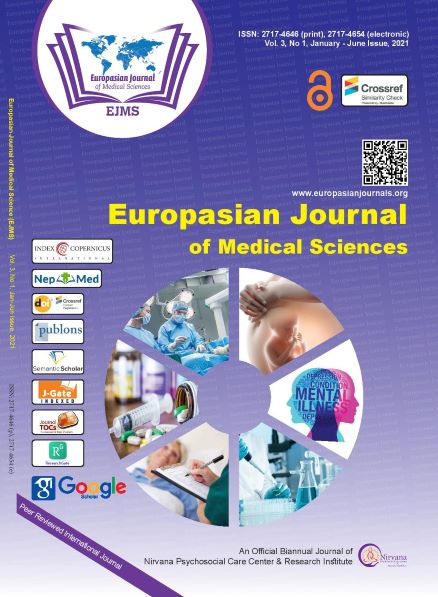Incidence of Congenital Fetal Malformations in Tribhuban University Teaching Hospital, Kathmandu, Nepal: a Hospital Based Study
Abstract
Background: Birth defects are the abnormalities in structure or function
present at birth. Major abnormalities of birth defects lead to physical or
developmental disabilities which may need urgent medical or surgical
treatment and may cause death in early days of life. The objective of this
study is to find the incidence of congenital abnormalities in this institution.
Methods: This was a prospective study conducted in Institute of
Medicine, Maharajgunj Medical Campus, Tribhuwan University Teaching
Hospital from April 2014 to February 2016 . All the delivered babies in
this hospital during the study period were included. All the birth cases of
gross congenital fetal malformation were identified and carefully studied
and classified with the help of the International Classification of diseases
(ICD-10).
Results: Out of total 8300 birth in 22 months study period, congenital
fetal malformation delivered during this period was 94 (1.13%) in 7868
live birth. The maximum number of congenital fetal malformation was
seen in musculoskeletal system 24.44%. This was followed by a central
nervous system 17.02%, gastrointestinal system 12.76%, and cardiac
system 10.63%. There was equal number of congenital fetal malformation
seen in renal system and genitourinary system 7.44%, in craniofacial
system and miscellaneous 9.57%.The lowest number of congenital fetal
malformation seen in respiratory system 1.06%.
Conclusion: Fetal congenital malformation has a major role in morbidity
and mortality of neonates and children as well. The most common system
involved in our study was musculoskeletal.
Copyright (c) 2021 Authors

This work is licensed under a Creative Commons Attribution 4.0 International License.
All articles published in EJMS are licensed under the Creative Commons Attribution 4.0 International License (CC-BY 4.0). The author/s as the copyright holder will retain the ownership of the copyrights without restrictions for their content under the CC-BY 4.0 license, and allow others to copy, use, print, share, modify, and distribute the content of the article even in commercial purpose as long as the original authors and the journal are properly cited. No permission is required from the author/s or the publishers. Appropriate attribution can be provided by simply citing the original article.
On behalf of all the authors, the corresponding author is responsible for completing and returning the agreement form to the editorial office. More information about the terms and conditions, privacy policies, and copyrights can be found on the webpage of the Creative Commons license privacy policy. https://creativecommons.org/licenses/by/4.0/




